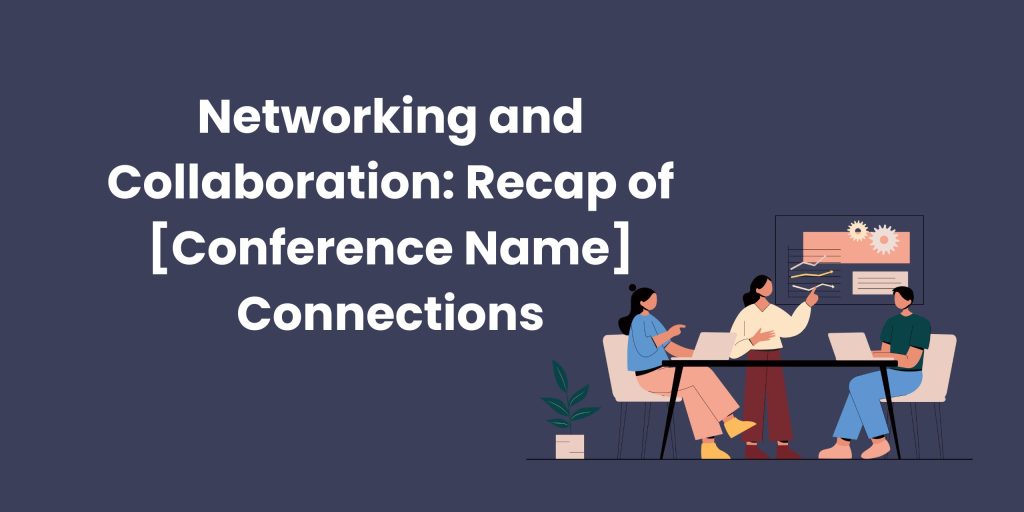Introduction:
Networking and collaboration are essential components of academic and professional success, allowing individuals to build relationships, exchange ideas, and explore opportunities for collaboration. [Conference Name] provided a prime opportunity for attendees to network and collaborate with peers, experts, and professionals in their respective fields. In this blog post, we’ll recap the networking and collaboration experiences at [Conference Name], highlighting valuable connections made, insights gained, and strategies for effective networking. Whether you attended the conference or not, this recap will provide valuable guidance and inspiration for students seeking to expand their networks and forge meaningful collaborations.
- Introduction to [Conference Name]:
Introduce [Conference Name] and its significance as a platform for networking and collaboration in the academic and professional communities. Discuss the diverse range of attendees, including researchers, scholars, practitioners, students, and industry professionals, who came together to exchange ideas and explore collaboration opportunities. - Keynote Networking Events:
Discuss the keynote networking events and receptions held at [Conference Name], which provided attendees with opportunities to connect and engage in informal discussions. Highlight the importance of attending these events to meet fellow attendees, speakers, and sponsors, and share experiences and insights in a relaxed setting. - Speed Networking Sessions:
Explore the speed networking sessions organized at [Conference Name], where attendees had the opportunity to meet multiple individuals in quick succession. Discuss the structure of these sessions and share tips for making a memorable impression, exchanging contact information, and following up with connections made. - Panel Discussions and Roundtable Sessions:
Examine the panel discussions and roundtable sessions at [Conference Name] that facilitated in-depth discussions on specific topics or issues. Discuss how these sessions provided opportunities for attendees to engage with experts and peers, share insights, and explore collaboration opportunities in areas of mutual interest. - Poster Sessions and Exhibits:
Highlight the poster sessions and exhibits at [Conference Name], where attendees could showcase their research, projects, and innovations. Discuss how these sessions provided opportunities for attendees to network with presenters, learn about new research findings and initiatives, and explore potential collaboration opportunities. - Virtual Networking Opportunities:
Discuss the virtual networking opportunities provided by [Conference Name], which allowed remote attendees to connect with speakers and peers via online platforms and networking tools. Share tips for effectively networking in a virtual environment, such as using chat features, joining breakout rooms, and scheduling one-on-one meetings. - Mentorship and Career Development:
Explore mentorship and career development opportunities offered at [Conference Name], such as mentorship programs, career fairs, and workshops. Discuss the importance of seeking mentorship and guidance from experienced professionals, and share tips for finding mentors and advancing one’s career in academia or industry. - Follow-Up and Continued Engagement:
Emphasize the importance of following up with connections made at [Conference Name] and maintaining ongoing engagement beyond the conference. Discuss strategies for following up with new contacts, including sending personalized emails, connecting on professional networking platforms, and scheduling follow-up meetings or collaborations.
Conclusion:
Summarize the networking and collaboration experiences at [Conference Name], highlighting the valuable connections made, insights gained, and opportunities explored. Encourage readers to leverage the connections and insights gained at the conference to further their academic and professional goals, and to continue seeking opportunities for networking and collaboration in their respective fields. By actively participating in networking and collaboration opportunities, students can expand their networks, gain valuable insights, and forge meaningful collaborations that contribute to their success in academia and beyond.
